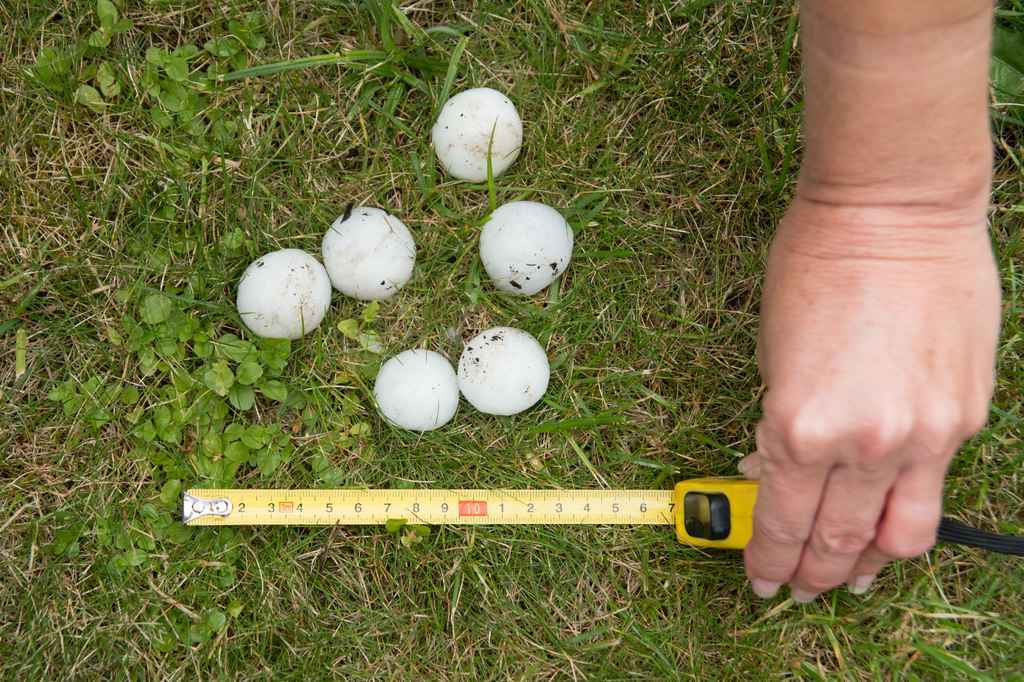This week, residents in Boulder County experienced some severe weather as this major storm season continues to ramp up. Here’s the overview of what occurred:
- What: Hail, Thunderstorms
- When: May 9-10, 2023
- Where: Boulder County, CO
What It Means for Your Home
Newsweek reported on its website that the area around Boulder County, CO saw heavy thunderstorms and hail the size of golf balls falling across the area.
Those are some huge concerns for local residents – but what exactly does that mean for your home?
Hail Concerns
Generally, hail that is greater than 1″ in diameter will cause damage and warrants a professional inspection. Hail this size can create dents in shingles as well as bruising in the underlayment. You may see dents in your gutters and fascia, while siding can become dented or even cracked. Hail can tear holes in window and door screens, and shingles will experience granule loss – this will be obvious from an excessive amount of granules in your gutter downspouts.
Larger hail, in the range of 1.5″ to 2″ in diameter, is even more destructive. In addition to the above problems, the hail of this size can begin to penetrate softer parts of the roof like ridge caps and plastic roof vents. Siding is more likely to crack and break – you may even see your siding tear off entirely from the combined pressure of hail strikes and high winds. Windows and doors may show cracks in their glass from hail impacts. Most metal fixtures will begin to show damage.
Oh hail no!
Check out the view of this cray storm in Northern #Colorado from the Johnstown area off I-25 last night!
Yikes. #cowx #colorado @kktvSydney pic.twitter.com/tjiuELrmAp— Matt Kroschel (@Matt_Kroschel) May 10, 2023
Thunderstorm Concerns
Thunderstorms are a normal precursor to hazards such as lightning, hail, wind, floods, and even tornadoes. They are quite prevalent along the Front Range to the eastern plains during the spring and summer. The typical thunderstorm is 15 miles in diameter and lasts an average of 30 minutes. Lightning can occur anywhere there is a thunderstorm, and can even strike miles away from the storm. Looking at where lightning occurs helps describe where the most prevalent thunderstorm activity is in Colorado. Familiarizing yourself with the terms below may help with what to expect so you can properly prepare.
- Severe Thunderstorm Watch ─ Severe thunderstorms are possible in and near the watch area. Stay informed and be ready to act if a severe thunderstorm warning is issued.
- Severe Thunderstorm Warning ─ Severe weather has been reported by spotters or indicated by radar. Warnings indicate imminent danger to life and property.
- 30/30 Lightning Rule ─ You can tell how close you are to a lightning strike by counting the seconds between seeing the flash and hearing the thunder. For every five seconds you count, the lightning is one mile away. If you see a flash and instantly hear the thunder, the lightning strike is very close.
Boulder County Storm Damage Resources
Boulder County Office of Emergency Management
The Boulder County Office of Emergency Management website helpfully provides adequate emergency response information within the local community. These informative guides and social media posts are designed to help Boulder County residents in the event of the county reports any storm damage to their properties, which will assist the National Weather Service in evaluating the extent of the damage to the area as well as the severity of the storm.
Cairn Roofing Group
Cairn Roofing Group has been faithfully serving Boulder County and the surrounding areas since 2017. If you’ve found yourself facing roof damage from the recent hail and wind storms in the area – don’t wait. Call Colorado’s trusted roofing company today to schedule a free inspection and let us help you keep your property safe this storm season.
 (720) 670-0265
(720) 670-0265
